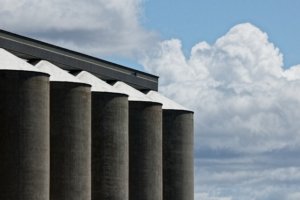

Have you noticed that modern architectural design often celebrates forms that, in another time and place, could be considered rustic?
On a recent drive through rural Idaho and Washington, I encountered numerous examples of agricultural buildings in pastoral settings. Barns, stables, grain elevators, silos and windmills—all of these are built from basic forms stripped down to their essence. Cylinder, cube, cone: ultimate simplicity. Modern reinterpretations of these forms as are seen as chic and avant-garde.
But it turns out minimalism is nothing new. In an agricultural setting, these buildings were originally designed not to impress but to be useful and efficiently express their intended purpose. But, like their contemporary descendants, they offer something beyond the pragmatic. They seem to have an ordering principle, a harmony of form and function that can only be described as beautiful. Over time we have come to appreciate the honesty of these pure forms.

An object stripped of superfluous decoration and designed clearly for its purpose is the basic design tenant of modern architecture. The adage “form ever follows function” is associated with Louis Sullivan (1856-1924) and first appears in his 1896 article “The Tall Office Building Artistically Considered.” Although Sullivan’s architecture is noted for its ornamentation, primarily in terra cotta, Louis’s ornament is characterized as “organic” and purposefully integrated into the form of the buildings he designed—it was not intended to be superfluous decoration, which was common in Victorian architecture of the same period.

Other early modernist designers interpreted that philosophy in a much stricter sense and eliminated any detail or “ornament.” The Austrian architect Adolf Loos (1870-1933) worked as a carpenter in the USA in the 1890s and took notice celebrating industrial artifacts like corn silos and steel water towers as examples of functional design. In 1908 he went on to write an allegorical essay titled “Ornament and Crime” criticizing ornament in useful objects. This philosophical direction matured in the Bauhaus and onto Mid- Century Modernism, producing modern and current contemporary buildings that are strikingly pure in their clean geometric proportions. Looking farther back in time, they also connect to Classical architectural designs based on orderly mathematical principles and fixed proportions.
These structures have inspired designers from vernacular artists to modernist architects. Today new technology and materials enable reinterpretation of these apparently humble, rustic predecessors. They are honest. Satisfying. Functional. Clean and streamlined. With a whisper of nostalgia that draws us into dreams of a simpler past and hope for a simpler future.
